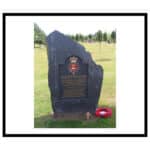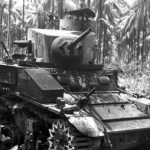The Second World War
On the 11th of June Italy declared war on Britain and France and our forces in the Western Desert began attacking Italian positions over the Egyptian border into Libya.
The Egyptian Frontier, 12 June – 12 September 1940
The first action was taking the fort of Capuzzo which they had to capture twice in a month. The rest of June and July was spent patrolling and harassing the enemy in and around Capuzzo waiting for the inevitable advance.
In January 1941 the Regiment was involved in the fighting around Bardia and Sidi Barrani then came the attack on Tobruk, which earned the regiment high praise from the Australian infantry.
Beda Fomm, 5-8 February 1941

7th Hussars A15 Crusader and Transporter 1941
Both the 3rd King’s Own Hussars and the 7th Queen’s Own Hussars played leading roles with the 7th Armoured Division in this final and decisive battle against the Italians in North Africa.
The latter were trying to pull their forces out of Benghazi and cutting them off involved a mad dash across 150 miles of difficult country.
When the 3rd and 7th reached the coastal road leading south out of Benghazi at Beda Fomm they came across “five miles of a London traffic jam”.
This resulted in the final destruction of the Italian forces and the Division capturing over 20,000 prisoners, 112 tanks, 216 guns and 1,500 lorries.
Sidi Rezegh, 19-23 November 1941
A far sterner enemy took over from the Italians when Rommel’s Africa Korps with its superior tanks started to push the allies back into Egypt. On 21st November 1941, the 7th Hussars were ordered to a blocking position north of Sidi Rezegh, where they encountered the might of the German advance in the shape of fifty Panzers, whose armament completely outclassed the Mark VI.
For four days the regiment carried out its mission, holding off a German armoured division until by the 28th of November, the 7th had only two surviving tanks, and had lost their Commanding Officer Killed among many other casualties, missing and prisoners.
They went back to Abassia to refit until embarking in January 1942 for Rangoon in Burma, where again they were part of the 7th Armoured Brigade.
Burma 1942

7th Hussars, Burma 1942
The 7th Queen’s Own Hussars landed with the 7th Armoured Brigade on 21 February 1942 at Rangoon.
The situation was desperate and the 7th moved straight up to Pegu to fight the marauding Japanese.
Pegu was untenable so the British began their historic retreat northwards using the 7th Hussar Stuart Tanks to smash roadblocks, cover the withdrawal and carry the wounded.
Why not discover what it was like during one such night in Burma?
There were countless acts of heroism by the 7th in the face of the inhumanity of the Japanese, and epitomised in Field Marshall Alexander’s words about the 7th Hussars:
“Without them, we should never have got the Army out of Burma; no praise can be too high for them”
On the 26th of April, the 7th Hussars moved into the southern outskirts of Meiktila at first light. ‘A’ Squadron, was sent south and contacted the enemy near Kandang. Troops from ‘B’ and ‘C’ Squadrons were sent down in support with also ‘D’ Troop of the Essex Yeomanry and a company of the West Yorkshire Regiment.
An attack was put in on Kandang and a brisk engagement ensued in which heavy casualties were inflicted on the enemy, but we were unable to take the village which was held in considerable strength and 7th Hussars lost two tanks. The Regiment withdrew north after dark, ferrying infantry and went into the harbour north of Wundwin.
2 patrols of ‘A’ Sqn 2 RTR left one due east across the country to rly, and one due west to the Myingyan road. These remained on patrol all day without seeing any enemy and the Eastern patrol ordered further south as the enemy was reported at Thazi, which was held by the Chinese.
2 RTR Leaguered with Bde HQ and later joined by 7th Hussars who had disengaged with some difficulty at nightfall.
Soon the British had been pushed back beyond Prome and at the start of May 1942 when they crossed the River Chindwin, the Regiment had to destroy their tanks and became pedestrians for the final 150 miles of the retreat.
On 17th May the remnants of the division staggered into Imphal. The 7th had covered nearly one thousand miles in three and half months losing forty-six killed and fifty wounded, and earning the highest regard from all who had met them.

Men of the 7th Hussars with their M3 Grant Tanks
The 7th was issued Grants when they moved from India to Iraq in 1943.
This time was used to reconstitute their losses from the Burma campaign and initially train on the Grant. The 7th Armoured Brigade spent six long unhappy months on exercise, firing on ranges and organising wireless schemes amid occasional sand storms south of Baghdad. In that hot, dusty, colourless station in Iraq, hockey and soccer were played, and in April 1943, in the severe heat, cricket was played.
The tank crews familiarised themselves with the M3 General Grant tanks and the lighter Stuarts. General Sir H. (Jumbo) Maitland-Wilson, GOC Paiforce, visited the Brigade on 11th December, and the GOC, 5th Indian Division, welcomed the Brigade on Christmas Day and presented medal ribbons for actions in Burma. On occasions smaller composite squadrons trained with 21 Corps in Mosul, 200 miles north of Baghdad, while in March and April 1943 the Brigade took part in Exercise Scotter in the Karbala area. During this time sandfly fever or malaria claimed a hundred or so victims from the brigade.
They would move onto Syria and be issued with the M4 Sherman prior to deployment to Italy in May 1944 when they joined the advance up Italy seconded to the 2nd Polish Corps.
Ancona, 2-18 July 1944
They fought first for Ancona, a hard forty-eight hour battle; and then in August/September for the Gothic Line earning the praise of the Polish who granted the 7th Hussars the privilege of wearing the Maid of Warsaw for their “Magnificent work – fine examples of heroism and successful action”.
The Gothic Line, 3-21 September 1944

7th Hussars, Italy 1944
The 4th Queen’s Own Hussars and the 7th Queen’s Own Hussars were both involved in this hard slogging match to remove the Germans from their strong and well-prepared positions.
The 7th was fighting with the 2nd Polish Corps and was leading the armoured spearhead thrusts against the Gothic Line throughout September.
By October the allies were nearing Bologna, prepared to sit out the winter which provided the 7th time to practice in new swimming tanks and conduct foot reconnaissance into enemy territory.
Discover how these new swimming tanks were used in the Final Push to Venice and Trieste?
Both these factors proved vital in the battle for the Po plains and ensured that by 2nd May 1945 the German Army in Italy had had to surrender.
The 7th stayed on in Italy for a while then marched north ending up in June 1946 at Soltau, in Northern Germany, as part of the occupying Army.
Battle Honours
The 7th Queen’s Own Hussars were awarded a total of 10 battle honours during this period.
Why not take a look at the stories behind them:
- Egyptian Frontier 1940
- Beda Fomm
- Sidi Rezegh 1941
- North Africa 1940-41
- Pegu
- Paungde
- Burma 1942
- Ancona
- Rimini Line
- Italy 1944-45
Campaign Medals
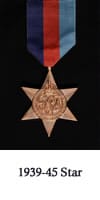
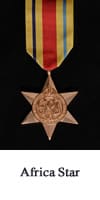
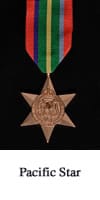
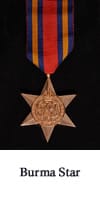
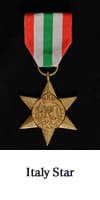
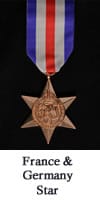

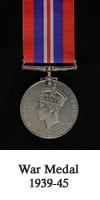
A series of various stars were issued for the campaigns of World War 2. The colours of the ribbons have symbolic significance and are believed to have been designed personally by King George VI.
No more than 5 stars may be awarded to one person. Those who qualify for more are awarded a clasp with the title of one of the stars to which they qualify. The clasp is then attached to the ribbon of one of the other stars.
1939 to 1945 Star. The 1939 to 1945 Star was awarded to personnel who completed operational service overseas between 3 September 1939 and 8 May 1945 (2 Sept 1945 in the Far East).
Africa Star. The Africa Star was awarded to personnel who served in North Africa, Malta or Egypt between 10 June 1940 and 12 May 1943.
Pacific Star: Malaya, Singapore and the Pacific Ocean. The Pacific Star was awarded for operational service in Malaya, Singapore, China, Hong Kong or Sumatra between 8 December 1941 and 2 September 1945.
Burma Star. The Burma Star was awarded for operational service in Burma between 11 December 1941 and 2 September 1945. Those serving in Bengal and Assam in India and China, Hong Kong, Malaya or Sumatra between other specified dates may also qualify.
Italy Star. The Italy Star was awarded for operational service in Sicily or Italy between 11 July 1943 and 8 May 1945. Those who served in Yugoslavia, Greece, Corsica or Sardinia between certain other specified dates would also qualify.
France and Germany Star. The France and Germany Star was awarded for operational service in France, Belgium, Luxembourg, The Netherlands or Germany between 6 June 1944 and 8 May 1945.
The Defence Medal. The Defence Medal is awarded for non-operational services such as those service personnel working in headquarters, on training bases and airfields and members of the Home guard.
War Medal 1939 to 1945. The War Medal was awarded to all full-time personnel of the armed forces wherever they were serving. The medal was granted in addition to campaign stars and the Defence Medal.

